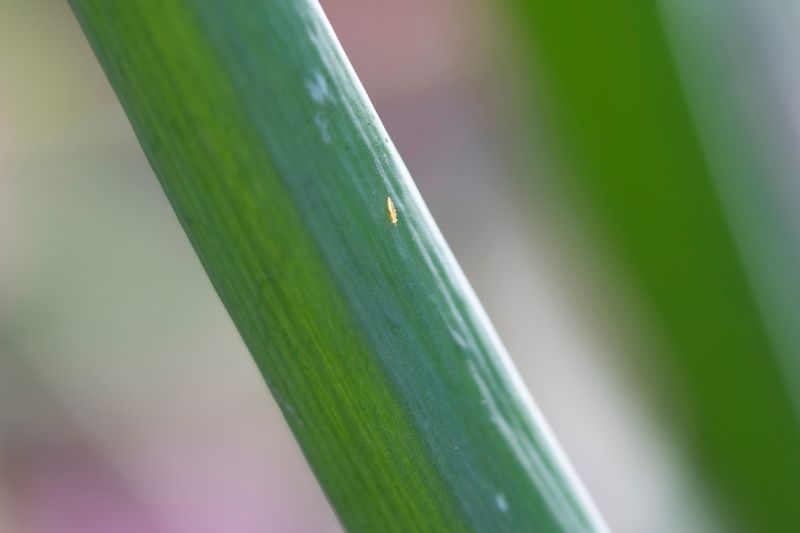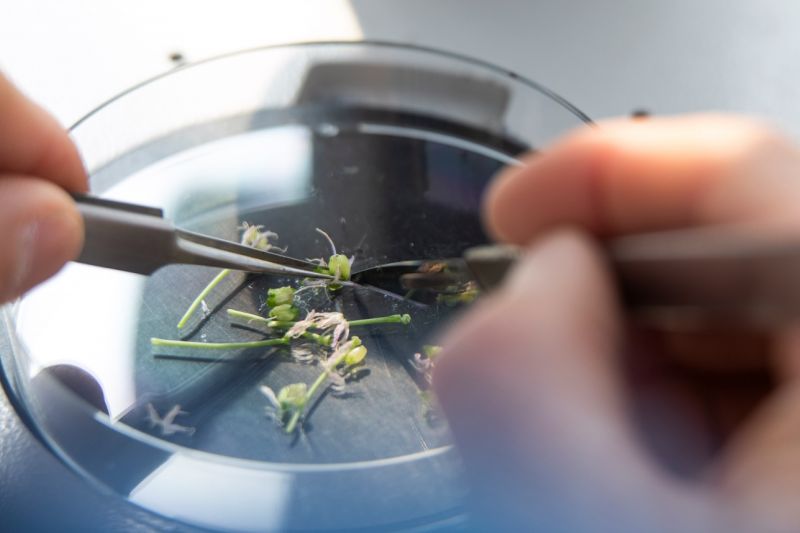Holland Onion, a resilient vegetable
Dutch onion crops have a much higher yield than comparable crops in other countries and demonstrably need less resources. But still, the productivity in the Netherlands can increase by half. We must continue to strive for more. We didn't become the world's largest onion exporter by accident.

‘As long as you don't increase productivity per hectare, you can’t describe it as progress’, says Rudy Rabbinge, Prof.Dr.Ir. Emeritus Professor of sustainable developments and food security at the Wageningen University & Research Centre. By way of comparison, he gives some figures from the successful Dutch agricultural history. ‘In the Middle Ages, farmers produced an average of 800 kilos of wheat per hectare with approximately 600 hours of labour. In 1900, this was 1,900 kilos of wheat with 300 hours of labour. In 2000, the Netherlands produced 9,000 kilos per hectare - more than ten times as much - with only a minimal effort of 8 to 15 hours, thanks to mechanisation. Now the Netherlands is the second largest agricultural exporter in the world'.
A potential of 125 tonnes per hectare
We can also certainly increase the productivity per hectare of the Dutch onion. After all, there is space for one million plants per hectare if you sow 4 units of seeds. In the 60-80 mm range, a much higher productivity of 125 tonnes nett should therefore be possible. The current potential yield is around 55-60 tonnes per hectare. Worldwide, the potential is often less than 20 tonnes plus there are enormous losses during processing, storage and marketing. In the end, local farmers sometimes deliver no more than 5 tonnes nett per hectare.
The Netherlands is helping to improve local production elsewhere using its knowledge and expertise. One important issue though is that the so-called long-day onion, that needs more than 16 hours of daylight, so it can only be grown in the narrow strip on Earth between the latitudes between Denmark and northern France. In the southern hemisphere, this region is mostly covered by ocean apart from a small area of New Zealand. Other regions on earth have shorter days and are therefore not suitable to cultivate the high quality, long-day onions that have a long shelf life.
Sequence information is crucial
Onions have a high economical value for the Netherlands as 90% of the harvested onion bulbs are exported all year round to 140 countries worldwide. In terms of global production value, the onion ranks second after the tomato. In volume terms it is the absolute number one. However, our knowledge of the onion genome is poor in comparison to the tomato. This is mainly due to the enormous size of the onion genome, which is no less than eight times larger than the tomato's and five time larger than that of humans.
The Onion DNA will soon be unravelled
The sequence information that Dutch scientist are unravelling in Wageningen at the moment, is extremely valuable in identifying genes that are associated with important characteristics, such as disease resistance, resilience and (climate) adaptability. It will be a lot easier to get higher onion yields when we know more about the onions’ DNA. The final results of the Sequon project are expected soon.
So, the good news is that we are already working in the Dutch onion chain for quite some time to increase the sustainability and resilience of the Dutch onion. From the farm to the fork. We are doing this within our own research programme Uireka, in close cooperation with the scientists from our eminent research institutes, such as Wageningen UR, test farms and a number of leading, private companies who have large R&D divisions focused on alliums.
In-depth research from our scientists in Wageningen into the natural resistance of wild varieties of the Allium cepa, such as Allium roylei or Allium fistulosum, has resulted in a lot of new knowledge and insights into the topic of disease and pest resistance. Many companies, from seed producers to farmers, are working hard to put this knowledge into practice.
Resilient soil
The search for a broader genetic background of wild onion varieties has led to more and more attention on the underground AM fungi (arbuscular mycorrhiza fungi) in the context of sustainable onion cultivation. A symbiotic relationship between the onion roots and this kind of fungus results in the transportation of sugars from the onion plants to the fungi and in return the fungi supply nutrients to the onion plants. A conventional trade that results in heavier Holland Onions, an improved absorption of phosphorous, for example, and better resistance to diseases.
Resilient roots
Global warming results in climate change and more extreme weather. Extremely dry periods, extremely wet periods and extreme heat will occur more frequently, as well as extreme downpours. Wild varieties that are robust and can withstand these extreme weather conditions, in general have a somewhat larger and more effective root system and provide a higher degree of yield certainty. The Uireka project had remarkable results with drip irrigation, which offers prospects to maintain and improve the cultivation of Dutch onions.
Resilient plants
A testing method has been developed to reliably determine the resistance to thrip. An increased level of thrip resistance was found in the wild Allium family. We expect that by making hand crosses within the species and testing the offspring for thrip resistance, it will be easier to get an insight into the underlying mechanism of this particular plant-pathogen reaction. In the meantime, it's important that the grower has sufficient alternatives to fight diseases and pests, so that the cultivation of Holland onions is also secured in the short term. After all, knowledge development and research have most value when they are linked to cultivating and processing the actual product.

Resilient bulb
The storage disease Fusarium bulb rot (FBR) is a major threat to onion cultivation. Species that are related to the onion could be a source of genetic variation for resistance to FBR. A difference has also been found in the level of Fusarium resistance between onions and shallots. Namely, shallots produce saponins that have an antifungal effect. These saponins could fully or partly prevent infection with Fusarium fungi.
Resilient diet
Onion varieties that can be grown with less water and fertilisers make less demands on important natural resources and make it unnecessary to destroy nature to make room for agricultural land. This is advantageous for both the planet and the growers. The demands on resources decrease, which means that more onions can be produced with the same input. To reduce the use of fertilisers, the focus is now on even more effective use of the main elements nitrogen, potassium and phosphate, and also the significance of specific trace elements and the integration into the overall soil biology. To reduce the dependency on the use of MH for extending shelf life, Uireka is researching three alternatives, including storage in a low-oxygen environment, which puts the bulb into a sort of coma.

